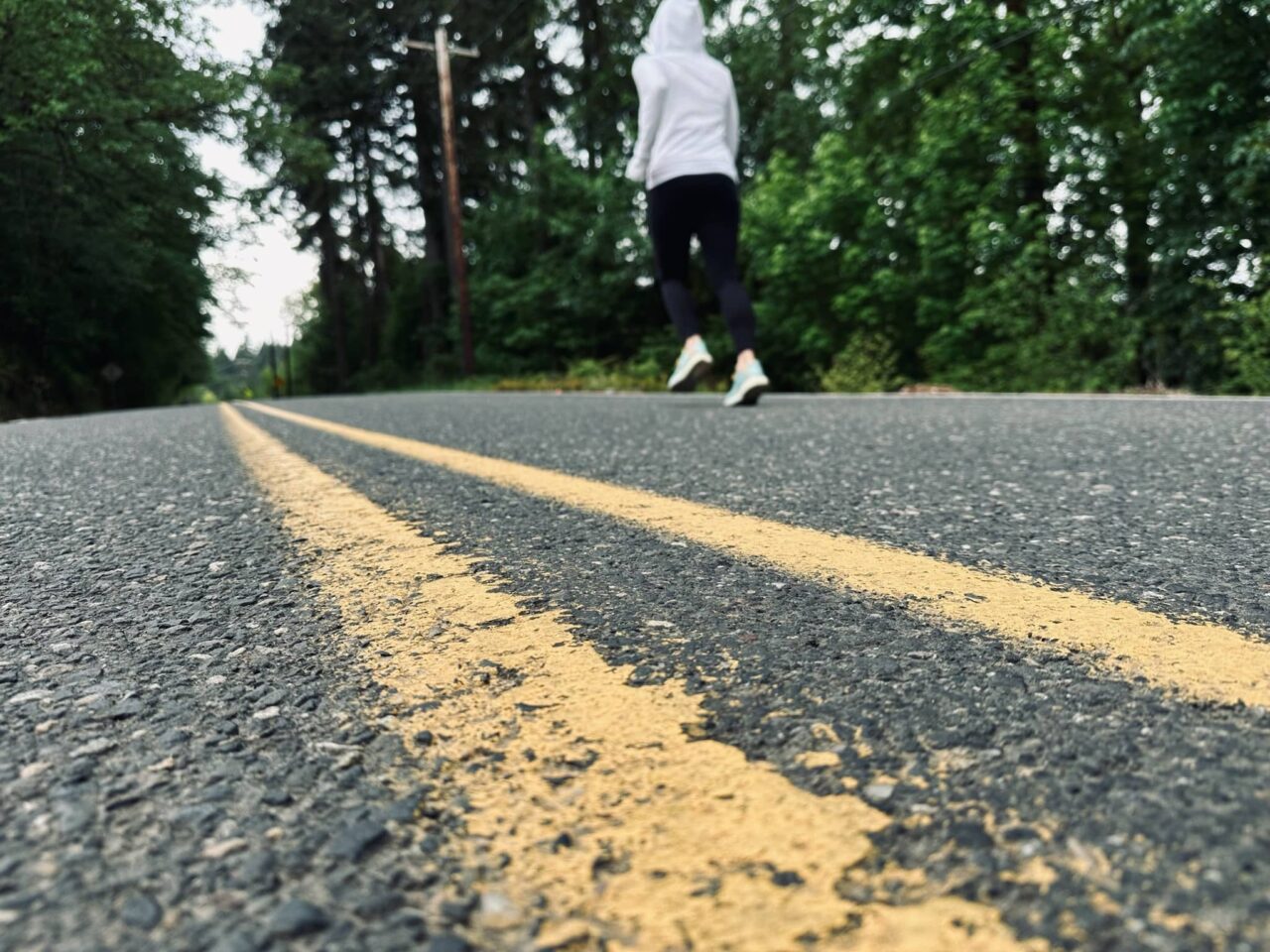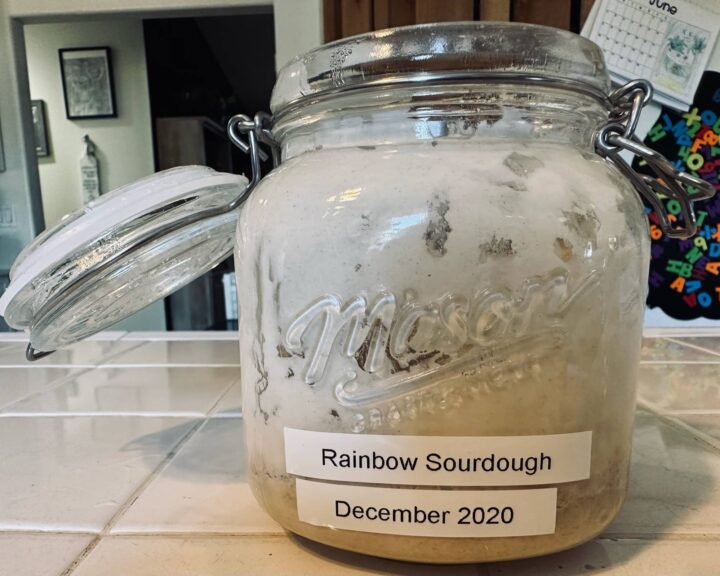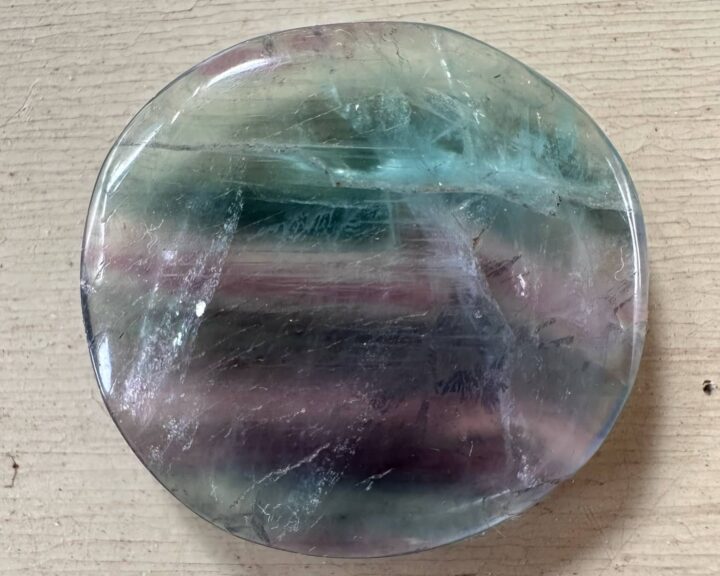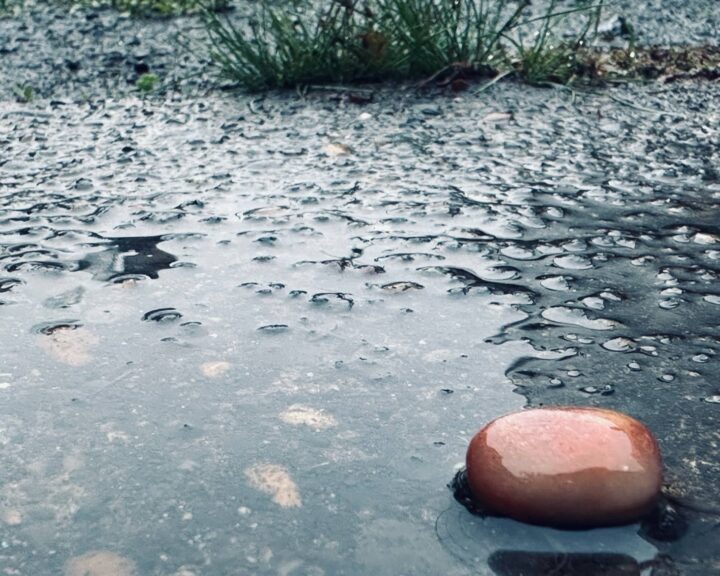Winter Training in the Pacific Northwest
I have my head down, watching for cracks in the road. Rain is pouring over the brim of my hat like an Oregon gutter. Icy drops splash on the back of my neck and roll down beneath my jacket. I ask myself again, Why do I need to run a marathon?
My quick breath exits my nose, colliding with 40°F winter air. The steam hits my glasses, fogging them. The cold makes it harder to breathe through my nose, increasing mucous production. I wipe my nose on the top of my soaking-wet gloves yet again. The drenched rain jacket sleeve will only make matters worse.
I’m sweating profusely under my useless rain jacket, now leaking, surmounted by the volume of rain. It already feels like I’m running in a plastic bag, trapping the heat from my body, creating a vicious cycle of more heat, sweat, and swampy conditions. The excessive heat under my jacket makes me shutter; for the next mile, I vividly recall the hell that was delivering the mail in summer, a vast climate contradicting my current condition, and yet the memory triggers a similar feeling.
Hotter Than a Mail Truck in July
There is nothing quite like being wrapped in polyester plastic clothing, thick black work boots, hands and arms full, tired, pounding the pavement for the ninth mile on foot in 100°F plus. The black top feels thick and sticky under my feet. Carrying heavy packages up the endless flights of stairs on my small town’s quaint, old Victorian porches, I would give anything for a quick breeze to cool my sweat. Urination stopped hours and hours prior despite the gallon of water I’d taken in. It’s all become sweat now. I can taste the salt on my skin as I lick my parched lips for brief relief.
But there is no relief. Digging into my seventh, eighth, or even ninth hour of this, I jump in the mail truck to move a block before walking again. I’m slammed with an even hotter blast from the metal oven, measurably 10-15 degrees hotter inside the truck than outside. That is how it feels under my plastic jacket; the memory of my days delivering mail forever burned in vivid detail.
I never could decide if this was better or worse than doing the same thing in the snow with frozen hands and feet. Or the days of incessant rain, when I’d be wet all day. Those are the days when you can’t shake the cold. It gets in your bones and stays with you—days like today. If I stop moving, my sweat will turn against me in minutes, cooling and freezing on my skin like a cold, wet blanket.
The Hours Roll On
Hour two: Time to consume more fuel. The rain has started coming in sideways. It is becoming increasingly difficult to run against the wind. My hands are stiff inside my wet gloves, and I struggle to use them. I’m trying to grab my gel pouch to refuel. The struggle lasts minutes, and my heart rate escalates with the frustration and break in concentration. I still need to perfect my formula. Today, it’s a blend of maple syrup, dates, collagen, and lemon juice. My guts turn and cramp. I’m thirsty, but the water is an equal struggle. Maybe I’ll wait another couple of miles…
What I wouldn’t give for an icy, frozen, dry day. At least my clothing would be dry, and I could see out of my glasses. What a game-changer that would be. The days are getting longer, though, with the turn of the year. Those dark nights running in the evening rain all winter had been brutal. But, as the miles amp up, so does the light. I have never been more grateful for Winter Solstice.
Don’t Stop Moving, or You’ll Stop for Good
My knee throbs with each step. I know if I stop, the pain will come within moments. I must keep the momentum, one foot in front of the other. This hill might kill me in the meantime…two miles, climbing 304 feet.
I laugh to myself remembering trips to Mt. Shasta many years ago in my old diesel VW Vanagon camper. I would be in the emergency lane as large trucks hauling loads would pass me in the truck lane. Dark, black smoke would be billowing out the back. ‘Rolling Coal’ as my trucker husband calls it. I’d be lucky to get her past 20 mph, constantly shifting between first and second gears. If I stopped, I would never get her rolling uphill again. I didn’t mind, though. I’d turn up the old radio and roll down the windows. I always got where I was going, eventually.
Slow and steady girl, I remind myself. I focus on my breath: In, hold…out slow. Nose only. Again. I’m in first gear now.
If It Doesn’t Kill Me…
It is known that muscle function can decrease in response to exercising in the cold. Muscle fibers struggle to function at optimal levels, and power decreases. An increase in fatigue can cause a decrease in metabolic heat production, and during endurance exercise, an athlete’s energy reserve may diminish quickly and leave them at risk for hypothermia. [1]
I focus my run on using my thighs, not my back. They’re burning inside, but my skin burns even more from the cold. My muscles are fighting the chill, compounded by the wet polyester of my running pants, now soaked through.
The fatigue is upon me. Each step is propelled by my stubborn will, though I’m digging deep for it. No matter what, I’m going to do this, even if it kills me.
There Is a Reason
Well, bloody hell. I made it. That’s all I can muster at the top of the hill. As the road levels out, I’m filled with a high. Athletes know it well. It was hard, painfully hard, and I did it. The endorphins paint a wide smile on my face as I transcend.
I finish my run with an overwhelming sense of accomplishment. Eighteen miles today, and I realize now exactly why I am training for a marathon. The action of the run is hard, but the mental endurance I’ve gained feels the most remarkable—something earned from the relentless pursuit of an athlete going one push further than ever before.
The marathon is simply a moment in time to commemorate the tally of miles. But, it is the hours and miles under our feet day in and day out while no one is watching, alone with the road and our inner voice, that show us our focus and strength, who we are, what we can do, and the rock-solid will of the athlete that we possess.
Reference
- Kenney WL, Wilmore JH, Costill DL. Exercise in Hot and Cold Environments. In Physiology of Sport and Exercise. Human kinetics; 2021 Oct 26. physio-pedia.com
Find out more about my journey on my About Me page.
You can also join me and other brilliant authors on Medium.




5 thoughts on “Why Do I Need To Run a Marathon?”
Great!!! Thank you for sharing this details. If you need some information about Cosmetic Treatment than have a look here UQ4
Wow, this post has given me useful info and answered some of my questions. I hope to give something back and aid others like you helped me. Feel free to surf my website Article Home about SEO.
I am really enjoying the theme/design of your site. Do you ever run into any web browser compatibility issues? A number of my blog readers have complained about my blog not working correctly in Explorer but looks great in Firefox. Do you have any suggestions to help fix this problem?
Very nice info and straight to the point. I am not sure if this is truly the best place to ask but do you people have any ideea where to employ some professional writers? Thanks 🙂
Hey! Someone in my Myspace group shared this site with us so I came to give it a look. I’m definitely loving the information. I’m bookmarking and will be tweeting this to my followers! Outstanding blog and terrific style and design.
Comments are closed.